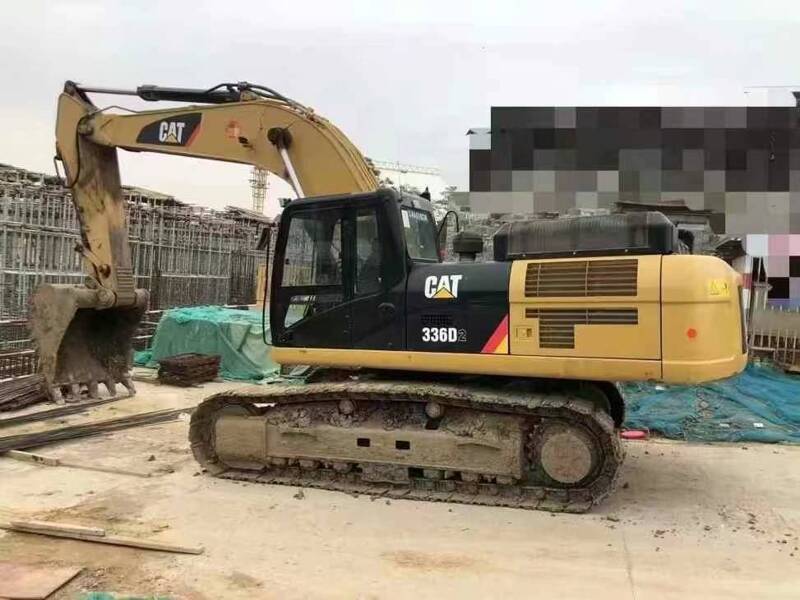What is the reason for the fast descent speed of the CAT 336 excavator boom?
The CAT 336 excavator's boom descends too quickly and nods when it lifts. The "nodding" fault is usually caused by damage to the load check valve at the inlet of the control valve, but no problem was found after inspection. Based on the system schematic analysis, the fault is a one-way valve malfunction between the boom control valve and its acceleration valve. Confirmed after dismantling and inspection.

Within a few minutes of turning and walking to the right, everything suddenly disappeared. During the test drive, it was found that the oil outlet pipe of the front pump was strongly vibrating. Upon inspection, it was found that there was a large amount of copper and iron powder in the return oil filter element of the fuel tank. Copper and iron powder also appeared in the oil discharge of the front pump casing. The front pump is severely damaged.
Suddenly, the entire vehicle slows down to 1/5 of the standard operating speed. The engine is working properly. The fault is a damaged engine speed.
Suddenly, the whole car started to "hold the car". After inspection, it was found that the variable solenoid valve PCV of the rear pump was not working. The reason was that the connection between the solenoid valve and the computer board was loose due to frequent machine vibration, resulting in an open circuit in the wiring harness plug.
The whole machine moves slowly and the hydraulic pump makes abnormal noises.
After inspection, there is a large amount of paper debris on the filter screen at the pump suction port of the hydraulic oil tank. After cleaning, the whole machine works normally. After about 30 minutes of normal operation, the rotation and right walking, as well as the movement of the boom and stick, are extremely slow. Other actions are normal.
After exchanging the outlet oil pipe of the main pump, the bucket and left movement are extremely slow, indicating that the fault is in the front pump or its variable mechanism. After cleaning all valves of the variable mechanism, the whole machine works normally.
Suddenly, the bucket and left movement were extremely slow. After exchanging the outlet oil pipe of the main pump, the rotation and right movement, as well as the movement of the boom and arm, were extremely slow. After inspection using the separation method, it was confirmed that the fault was in the variable mechanism of the rear pump. Upon dismantling and inspecting the variable mechanism, it was discovered that the pin of the variable piston shift fork had fallen off. Normal after reinstallation.
After the engine works for about 2-3 minutes, the left movement slows down. Upon inspection, it was found that the engine made a muffled sound when unloaded, indicating that it was working with a load.
After testing the outlet pressure of the hydraulic pump, it was found that the front pump had an unloaded pressure of 1.3 MPa and the rear pump had an unloaded pressure of 1. ZMPa immediately after the engine started. But after 2-3 minutes, the no-load pressure of the front pump is 1.3 MPa, and the no-load pressure of the rear pump is 30 MPa. According to the schematic analysis, after the pressure change, each actuator has no action, and the pressure generated by the system can only come from the action of the backup valve. The fault disappeared after removing the pilot control pipes at both ends of the backup valve.
The Caterpillar 336 excavator has been in use for 3 years. After purchasing the machine, it was found that the boom and lifting arm were slow during operation, while everything else was normal. After inspection, it was found that the half flow valve of the bucket rod had been artificially modified, and it worked normally after restoring the original system.
Track walking is weak and there is no movement in low gear. After replacing the seal of the central rotary joint, the fault still persists. Checking the walking speed solenoid valve, it was found that the valve core was stuck due to dirt in the oil. Normal after cleaning.
Suddenly walking left without moving forward, all other movements are normal. After inspection, it was found that the overload valve of the left travel motor was blocked by dirt, causing the valve core to be unable to move forward.
Source: https://www.lh-usedexcavator.com/


